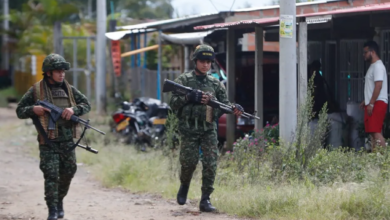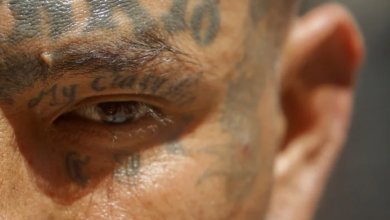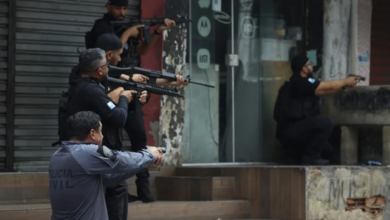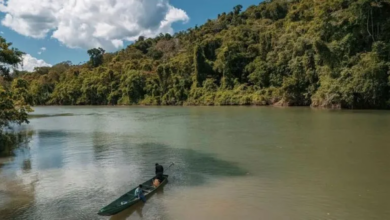Untold Silence: How Latin America’s Bloodshed Became Background Noise
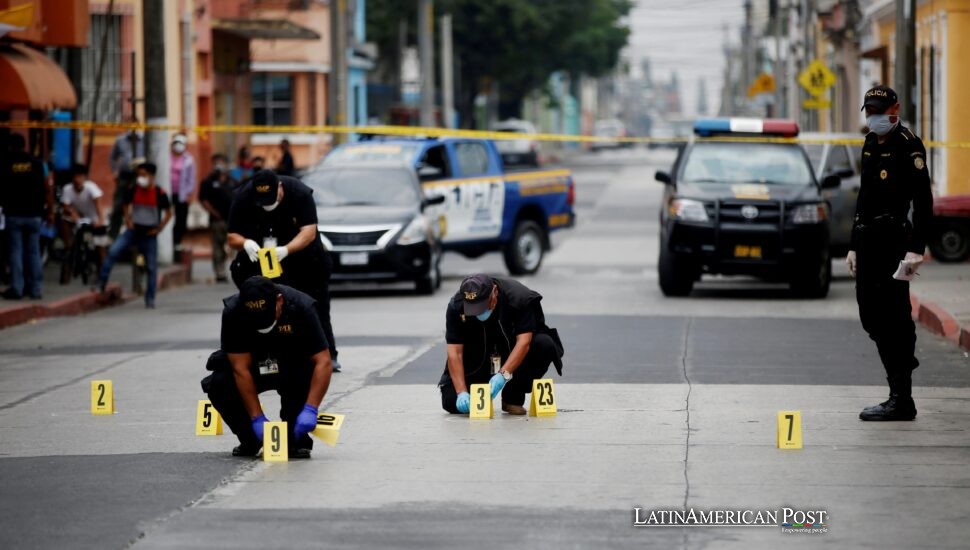
From Ecuador’s exploding homicide rate to Haiti’s near-total collapse, Latin America’s bloodshed is real, rising, and relentlessly ignored. As our timelines overflow with crisis, the world’s conscience has gone quiet. Violence hasn’t disappeared. We’ve just learned to scroll past it.
Doomscrolling Into Indifference
Cartel blockades, gang shootouts, and mass killings are turning parts of Latin America into conflict zones—but outside the region, the violence barely makes a dent in our collective awareness. Not because it isn’t horrific, but because we’ve become accustomed to it.
In theory, violence on this scale should stop us in our tracks. But in the digital age, it rarely does.
Open any social feed and you’ll find brutal headlines wedged between celebrity spats and cooking videos. A narco-massacre in Sinaloa. A prison riot in Guayaquil. Gang rapes and ransom kidnappings in Port-au-Prince. Each one is awful. Each one forgotten in minutes.
Psychologist Paul Slovic, who’s studied empathy and humanitarian response for decades, calls this “compassion fatigue.” His research shows that while people often feel a deep concern over one victim’s story, empathy tends to collapse as the numbers increase. One child abducted? Outrage. One thousand gunned down? Just a number.
This emotional numbing, amplified by algorithms and endless scrolling, renders even the most horrific horrors into mere wallpaper. The Western Hemisphere, once romanticized as a peaceful “backyard” of democratic progress, now simmers with bloodshed, while the rest of the world remains largely uninvolved.
And that disinterest has consequences.
Ecuador: When the Jungle Starts Burning
Once known for its biodiversity and eco-tourism, Ecuador is now one of the most violent countries in Latin America. In 2024, nearly 7,000 people were murdered, more than double the toll from a decade earlier. Drug routes have shifted south from Colombia, and the cartels followed.
President Daniel Noboa has responded with emergency powers, mass detentions, and even a request for U.S. troop assistance—a desperate move that underscores just how badly state control has eroded. But all the raids and rhetoric in the world won’t rebuild a judiciary system gutted by corruption or give jobs to desperate youth facing cartel recruitment.
In Guayaquil and Esmeraldas, some families now keep two bags packed: one for groceries, the other for evacuation. For Ecuadorians, gang violence isn’t an anomaly. It’s ambient—part of the soundscape, like the sounds of traffic or rain.
And yet, outside the region, Ecuador rarely makes headlines unless a drug lord escapes or a prison riot spirals into a full-scale siege. Even then, it vanishes within hours, eclipsed by celebrity gossip or distant wars with clearer frontlines.
Mexico: A Country Bleeding in Real Time
Mexico’s cartel wars are no longer a crisis—they are a chronic condition.
Over 30,000 people are murdered every year. Whole towns fall under curfews. In states like Michoacán, rural schoolteachers dodge crossfire to reach their classrooms. In Sinaloa, rival factions of El Chapo’s heirs fight block by block for control.
This has been Mexico’s reality for two decades.
Each new president promises a different approach. Felipe Calderón brought the military. Enrique Peña Nieto chased kingpins. Andrés Manuel López Obrador tried “hugs, not bullets.” Now, President Claudia Sheinbaum is betting on intelligence-based policing and reform. It’s more coherent, but progress will be slow.
In the meantime, tourism booms in Cancún, while American media largely look the other way. The horror continues with such frequency that it becomes routine. A massacre here, a dismembered body there. Grim, but predictable. And what’s predictable rarely shocks.
The result? A normalization of violence so thorough that we no longer ask how it might end—just how far it might spread.
Haiti: Collapse Without Headlines
Haiti isn’t teetering. It’s falling—and has been for years.
There’s been no elected president since 2021. Gangs now control 90% of Port-au-Prince. Kidnappings are daily. Fuel is scarce. Even humanitarian aid can’t enter parts of the capital without an armed escort.
The United Nations recorded 3,000 violent deaths in six months—a staggering figure for any country, let alone one still reeling from natural disasters, cholera outbreaks, and political assassinations.
Yet coverage remains sporadic at best. Part of the problem, scholars say, is structural. Global media outlets crave “news pegs”—a dramatic event, a viral image, something sudden. Haiti’s collapse is none of those. It is slow, grinding, and terminal. There’s no new headline because the crisis hasn’t ended. It’s just stalled at the edge of the abyss.
This invisibility adds insult to injury. Haitians don’t just suffer the violence—they suffer it alone.
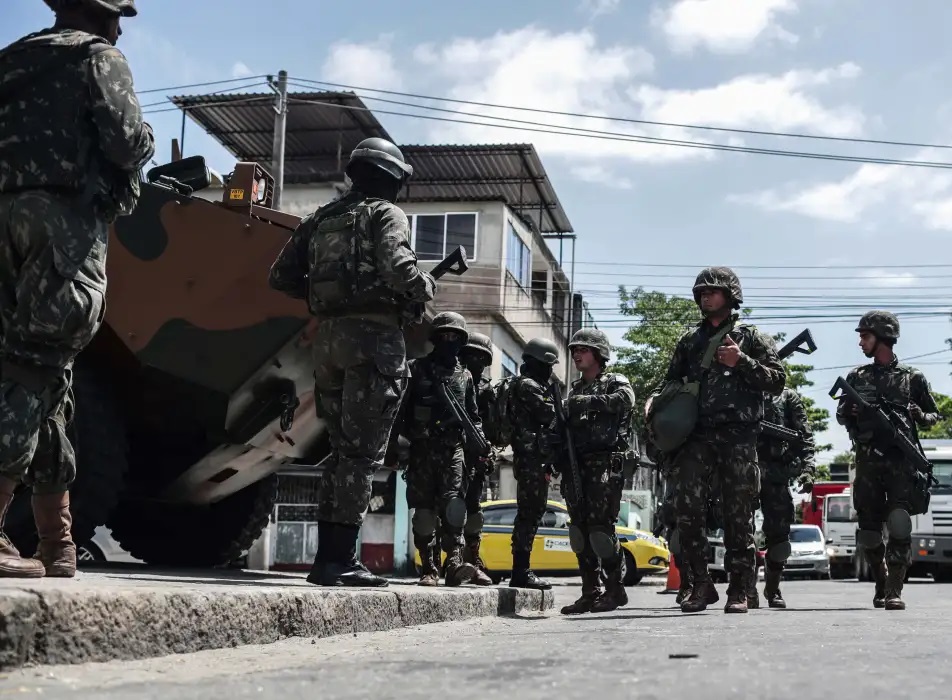
EFE/Esteban Biba
Remembering What Outrage Feels Like
So what can be done in the face of such fatigue?
Start with storytelling. Not the hit-and-run kind that flashes gang war headlines for 90 seconds, but deep, sustained reporting that follows victims, families, and systems. Journalism that lingers after the smoke clears and asks what allowed the fire in the first place.
Pair that with a policy that sees the people behind the headlines. U.S. foreign aid often focuses on militarization. But what if more of it went to judicial reform, anti-corruption oversight, and economic lifelines? What if those armored vehicles came with lawyers and job trainers?
And finally, the heaviest lift of all: a reader’s attention span. Pause. Look at the number. Imagine the family. Ask why the violence is constant, and the coverage isn’t. The cost of tuning out isn’t just emotional—it’s strategic. America’s guns and money flow into this violence. Migrants flee it. When we stop caring, we also stop preparing for the ways these crises ripple outward.
Latin America’s conflicts persist. But silence is not the absence of tragedy. It’s the soundtrack of a world choosing to look the other way.
Also Read: Leyva Denies Plot Against Petro Amid Institutional and Diplomatic Crisis in Colombia
Credits: Psychological research from Paul Slovic (Decision Research); homicide data from national crime registries; commentary from political scientist José Álvaro Moisés (USP); UN Office on Drugs and Crime (Haiti violence); media framing insights drawn from Columbia Journalism Review and Nieman Reports.

